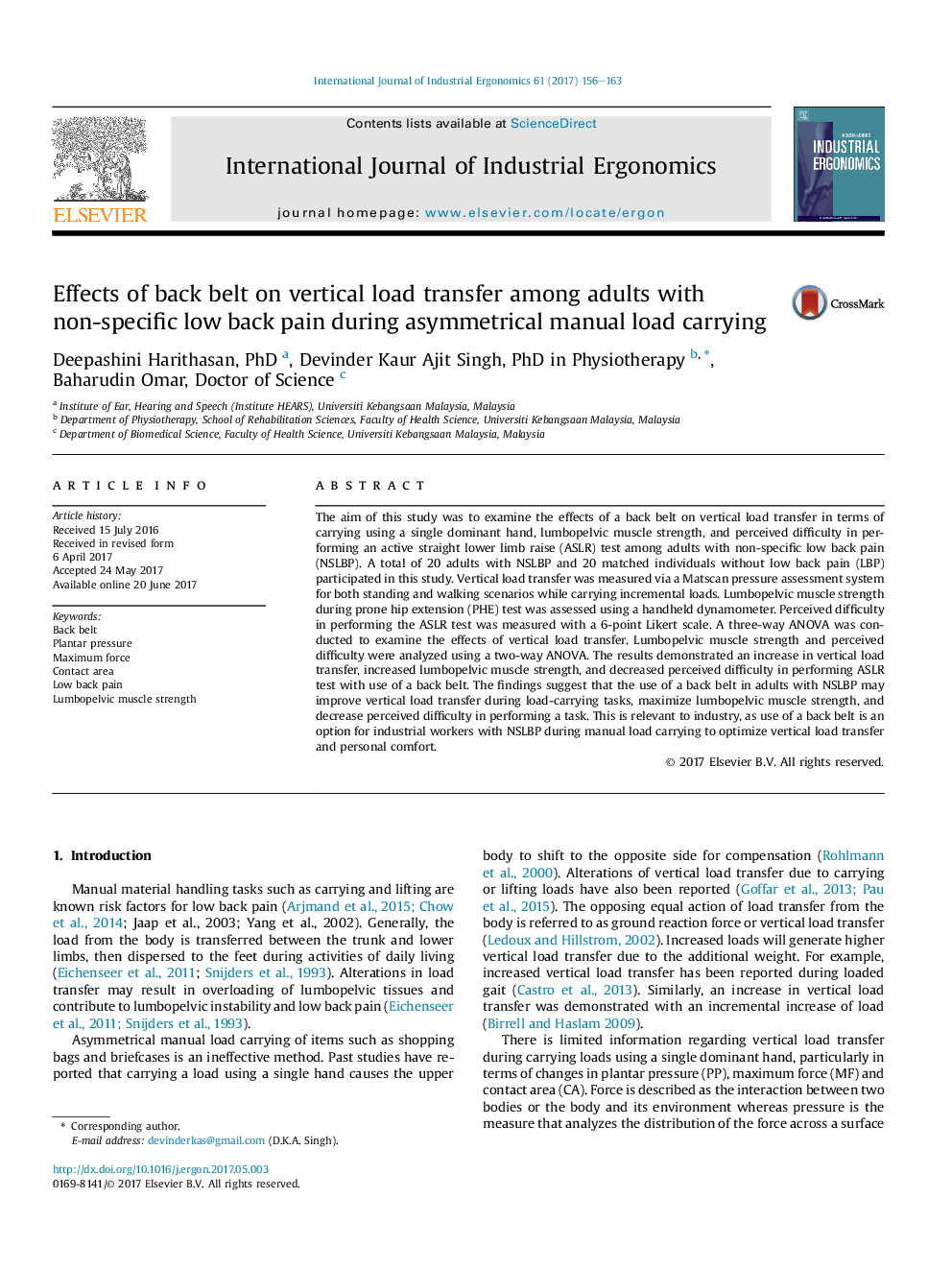| Article ID | Journal | Published Year | Pages | File Type |
|---|---|---|---|---|
| 5123673 | International Journal of Industrial Ergonomics | 2017 | 8 Pages |
â¢Changes in plantar pressure and maximum force were observed on both the lower limb when wearing a back belt during standing.â¢Low back patients and health individuals have similar pattern of vertical load transfer.â¢Back belt showed to maximize the lumbopelvic muscle strength and improve the perceived difficulty in performing ASLR test.
The aim of this study was to examine the effects of a back belt on vertical load transfer in terms of carrying using a single dominant hand, lumbopelvic muscle strength, and perceived difficulty in performing an active straight lower limb raise (ASLR) test among adults with non-specific low back pain (NSLBP). A total of 20 adults with NSLBP and 20 matched individuals without low back pain (LBP) participated in this study. Vertical load transfer was measured via a Matscan pressure assessment system for both standing and walking scenarios while carrying incremental loads. Lumbopelvic muscle strength during prone hip extension (PHE) test was assessed using a handheld dynamometer. Perceived difficulty in performing the ASLR test was measured with a 6-point Likert scale. A three-way ANOVA was conducted to examine the effects of vertical load transfer. Lumbopelvic muscle strength and perceived difficulty were analyzed using a two-way ANOVA. The results demonstrated an increase in vertical load transfer, increased lumbopelvic muscle strength, and decreased perceived difficulty in performing ASLR test with use of a back belt. The findings suggest that the use of a back belt in adults with NSLBP may improve vertical load transfer during load-carrying tasks, maximize lumbopelvic muscle strength, and decrease perceived difficulty in performing a task. This is relevant to industry, as use of a back belt is an option for industrial workers with NSLBP during manual load carrying to optimize vertical load transfer and personal comfort.
